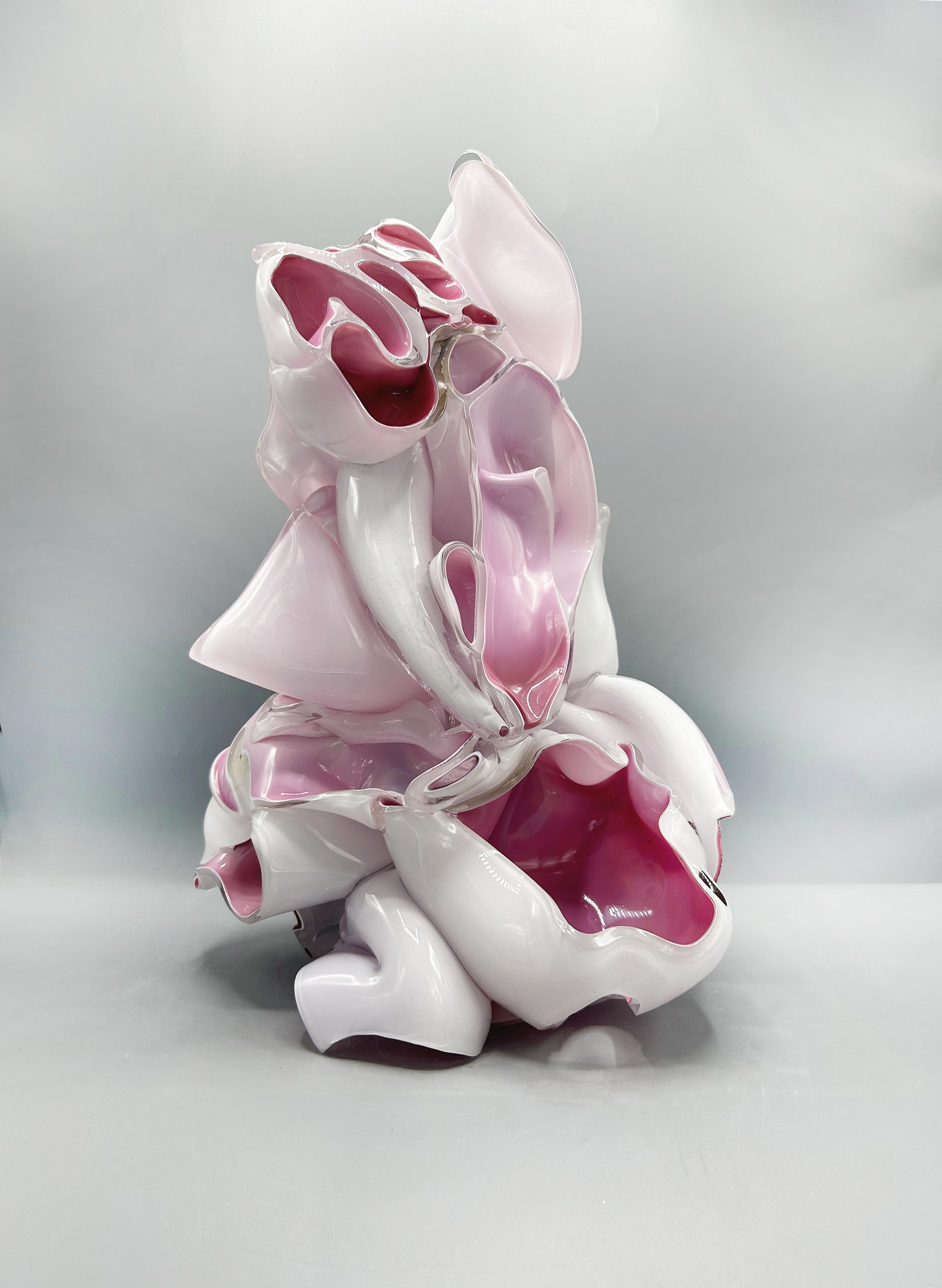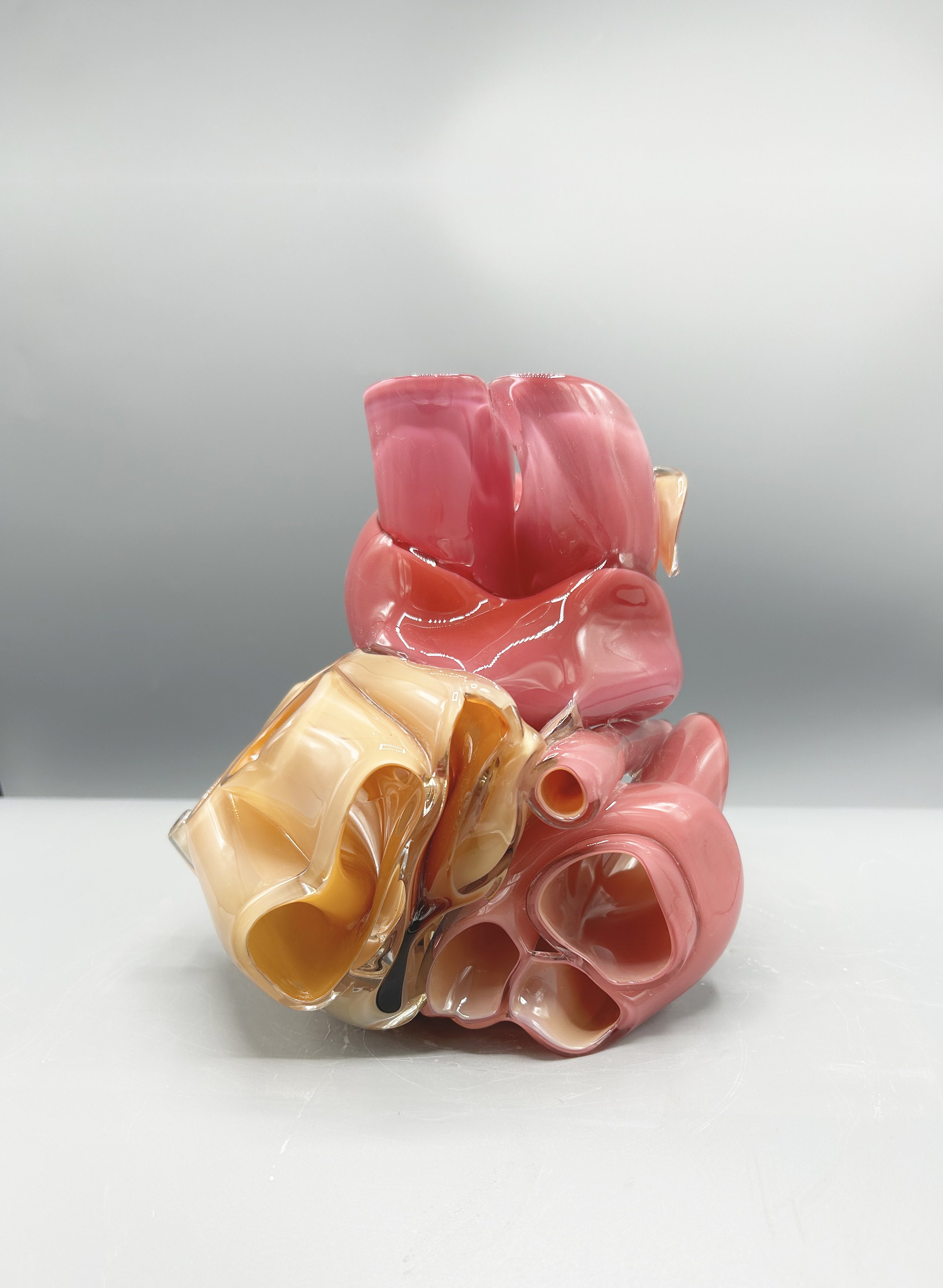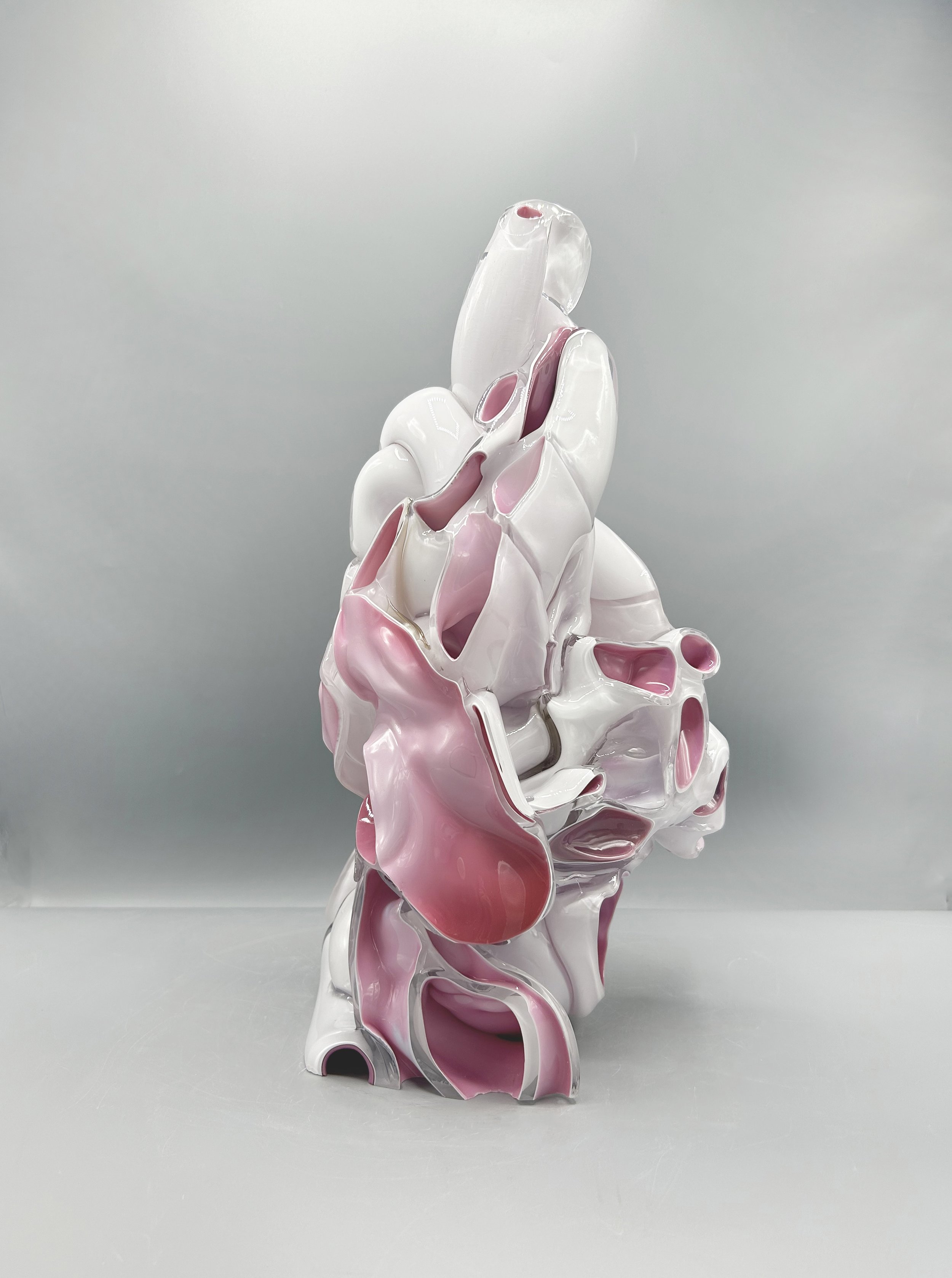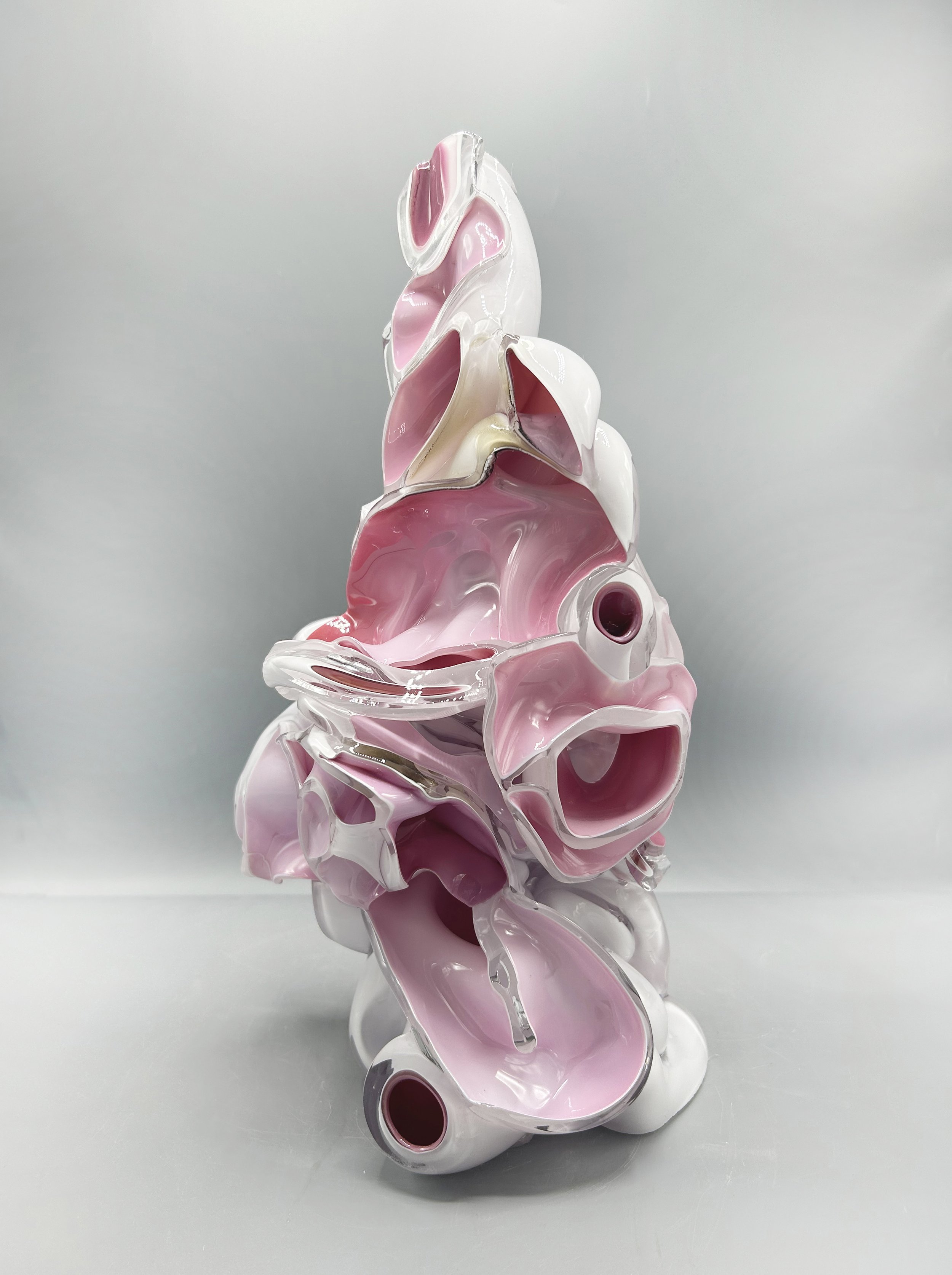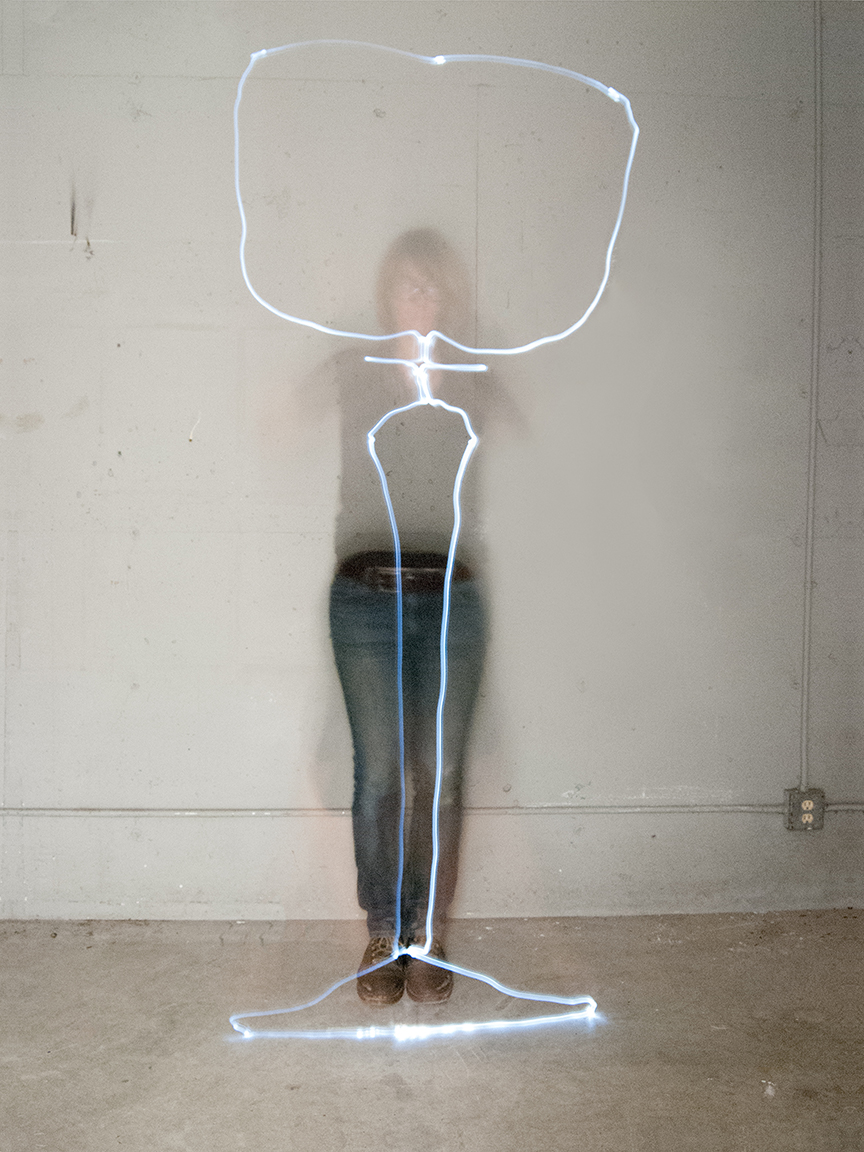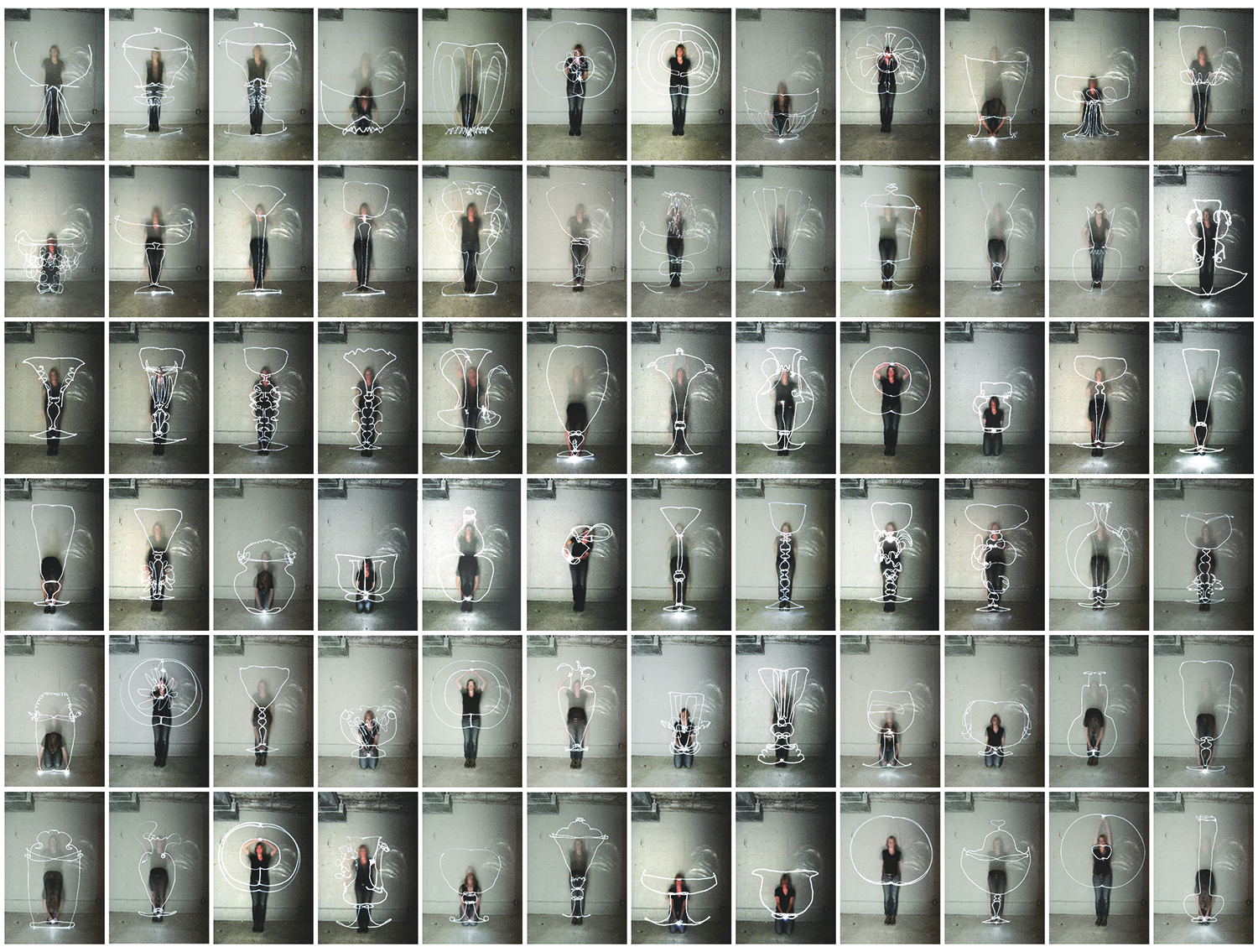KIM HARTY
In her recent work Kim Harty approaches glass making through an experimental feminist lens, delving into structures inspired by the body: from cells to vascular systems and organs. While her glassblowing practice is grounded in history of the traditional vessel, she moves beyond it using her considerable skill as a glassmaker and the material’s innate ability to represent the complex physicality of human organ forms, her pieces simultaneously invoke and provoke contemplation of the beautiful and grotesque aspects of the body. Our current exhibition Birthing Anatomies, focuses on pieces made over the last eighteen months to address ideas around reproduction and the body following the Dobbs vs. Jackson Women’s Health Organization ruling. The work grapples with themes of reproductive justice and societal perceptions of reproductive anatomy through abstraction, challenging the narratives we construct about our bodies and exposing the gap between imagination and lived experience. The work proves timely in the face of recent restrictive recent legislation and resonates broadly, echoing the words of Jamelle Bouie for the NYT: “You cannot disentangle abortion from reproductive rights. You cannot disentangle reproductive rights from bodily autonomy. And you cannot disentangle bodily autonomy from basic questions of equal rights and democratic freedom.”
Kim Harty received an MFA from the School of the Art Institute of Chicago (2013), and her BFA from the Rhode Island School of Design (2006). She currently serves as Section Lead & Associate Professor of Glass at the College of Creative Studies in Detroit, MI. Harty is an artist and scholar and her work, which includes sculpture, performance, video & photography has been shown extensively in the United States and in Europe, including at the Toledo Museum of Art, Toledo, OH; Stanze del Vetro, Venice, Italy; Museum of Arts & Design, New York, NY; Corning Museum of Glass, Corning, NY; Chrysler Museum of Art, Norfolk, VA & Design Museum Ghent, Ghent, Belgium. Her work is held in the collection of the Toledo Museum of Art.

